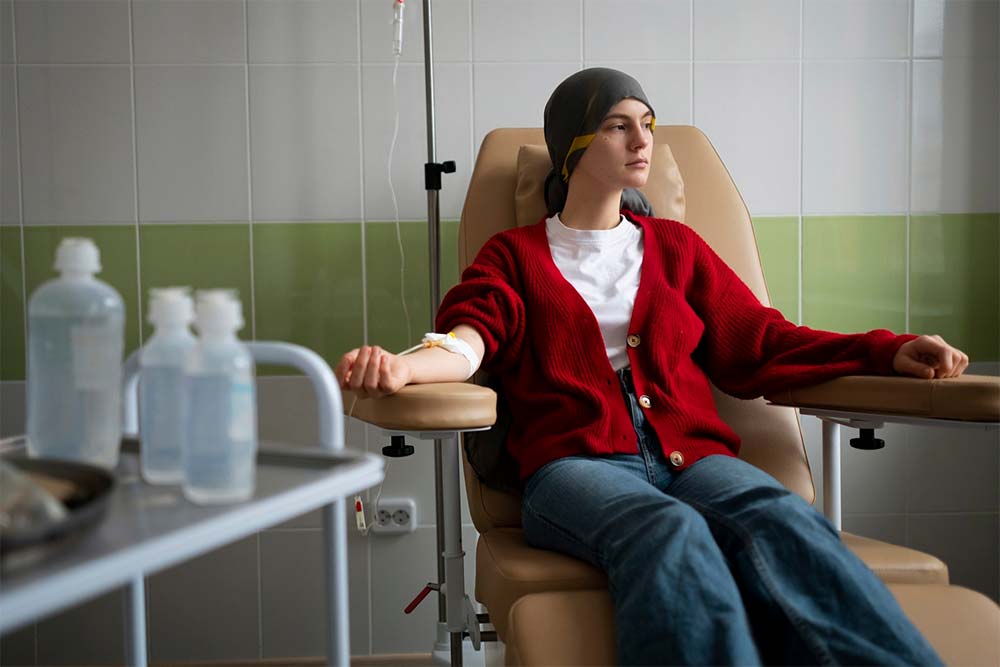Myelodysplastic syndrome (MDS) is a rare blood disorder in which the bone marrow does not produce enough healthy blood cells. The bone marrow is the spongy tissue inside the bones where blood cells are made. MDS can lead to a deficiency of red blood cells (anemia), white blood cells (leukopenia), or platelets (thrombocytopenia). MDS is considered a cancer of the blood-forming cells of the bone marrow. It is estimated that MDS affects approximately 5,000 to 10,000 people in the United States each year.
Did you know that myelodysplastic syndrome (MDS) is a type of cancer of the blood and bone marrow? It’s a relatively rare cancer, but its incidence is increasing. Here are some other interesting facts about MDS:
- MDS can develop from a pre-existing blood disorder, such as anemia.
- MDS is more common in older adults, with the average age of diagnosis being around 65.
- MDS can be caused by exposure to certain chemicals, such as benzene.
- MDS can be inherited, although this is rare.
- MDS can be treated with blood transfusions, chemotherapy, and stem cell transplant.
If you or someone you know has been diagnosed with MDS, be sure to talk to your doctor about treatment options.
Types of myelodysplastic syndromes
There are many different types of myelodysplastic syndromes (MDS), and it is important to be aware of the different types in order to get the best treatment possible. Some people with MDS have no symptoms, while others may experience fatigue, shortness of breath, bleeding, or infections. Treatment options for MDS vary depending on the severity of the disease and may include blood transfusions, chemotherapy, or stem cell transplantation. If you’re looking for additional treatment options for myelodysplastic syndromes, you can check out clinical trials for mds at Power.
Refractory cytopenia with multilineage dysplasia
This type of MDS is characterized by low levels of blood cells in the bone marrow, as well as abnormal cells in the bone marrow. The abnormal cells can be from any of the three blood cell lineages: red blood cells, white blood cells, or platelets.
Refractory cytopenia with unilineage dysplasia
RCUD is a form of MDS characterized by low blood cell levels in one or more lines of blood cells, as well as abnormal cells in the bone marrow.
Patients with RCUD may experience fatigue, shortness of breath, and an increased risk of infection. Treatment for RCUD typically includes blood transfusions and bone marrow transplants. Sometimes, patients may also require treatment with immunosuppressive drugs or radiation therapy.
Refractory anemia with ring sideroblasts
One type of MDS is refractory anemia with ring sideroblasts (RARS). RARS is a form of anemia in which the blood has a decreased ability to carry oxygen. People with RARS often have fatigue and a weakened immune system.
Refractory anemia with excess blasts
One type of MDS is refractory anemia with excess blasts (RAEB). RAEB is characterized by anemia (low red blood cell count), thrombocytopenia (low platelet count), and leukopenia (low white blood cell count). Patients with RAEB often experience fatigue, shortness of breath, and easy bruising or bleeding.
Refractory anemia
Refractory anemia can be caused by a variety of factors, including genetic mutations, certain medications, and radiation therapy. RA is a chronic condition that can lead to serious complications, such as infection, bleeding, and fatigue. There is no cure for RA, but treatments are available to help manage the condition.
Myelodysplastic syndrome is associated with an isolated del(5q) chromosome abnormality.
MDS can be associated with a variety of chromosome abnormalities, one of which is del(5q). Del(5q) is a type of chromosomal abnormality in which there is a deletion of the long arm of chromosome 5. This abnormality is associated with a specific type of MDS known as 5q- syndrome. Patients with this syndrome often have poor prognoses.
Del(5q) myelodysplastic syndrome (MDS) is a rare blood disorder caused by a missing piece of chromosome 5. People with del(5q) MDS usually have a low blood count and risk of developing leukemia.
What is the impact of Myelodysplastic Syndrome?
Myelodysplastic syndrome (MDS) is a blood and bone marrow disorder that can progress to leukemia. In MDS, the bone marrow produces abnormal blood cells. These abnormal cells are less effective than normal blood cells and can cause a variety of problems, including anemia, bleeding, and infection. MDS is a relatively rare disorder, but its incidence is increasing. The cause of MDS is unknown, but it is more common in older adults and in people with certain genetic disorders. There is no cure for MDS, but treatments are available to help manage the symptoms and slow the progression of the disease.
What increases your risk of myelodysplasia?
When it comes to your risk of developing myelodysplasia, there are a few things to keep in mind. First, your age is a factor. Those over the age of 60 are at a higher risk for developing the disease. Additionally, certain genetic disorders, such as Down syndrome, are also linked to an increased risk of myelodysplasia. Finally, exposure to certain chemicals, such as benzene, can also put you at a higher risk of developing the disease.

